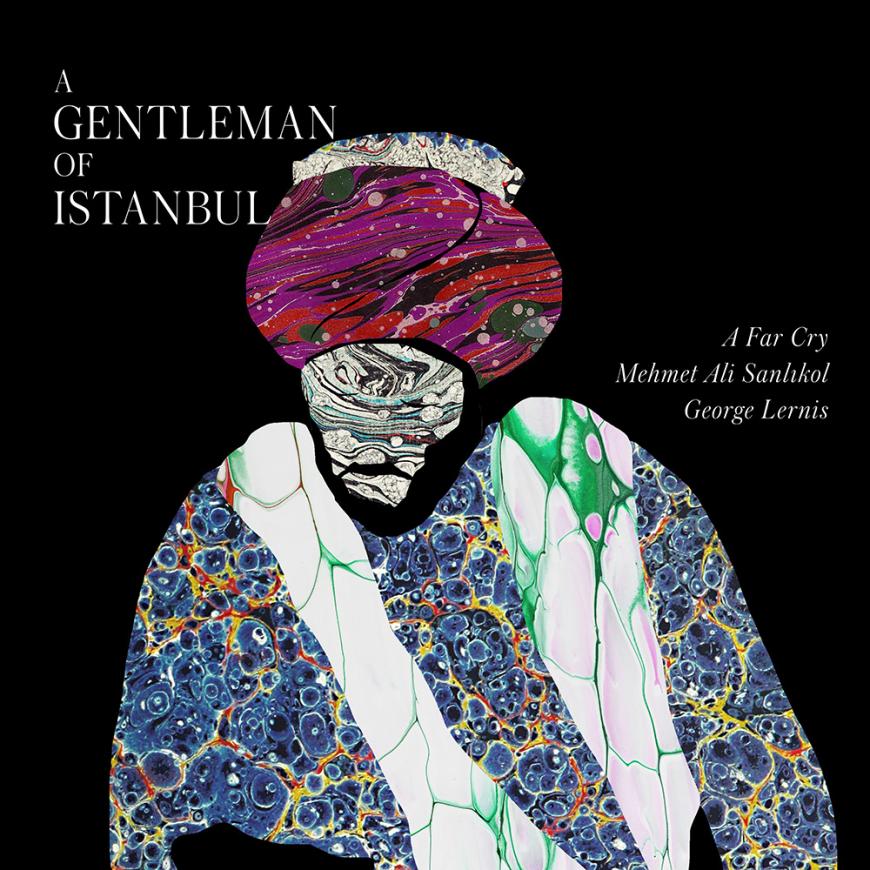
In the 17th century, an Istanbul-born explorer named Evliya Çelebi (Derviş Mehmed Zillî) traveled throughout the Ottoman Empire while penning an epic travelogue. Partly observational, partly fictional, and always fantastical, the 10-volume Seyahatnâme is a remarkable piece of literature showcasing Evliya’s storytelling range and cosmopolitan sensibilities as an Ottoman Muslim traveler.
In A Gentleman of Istanbul, Evliya’s travelogue is brought to dazzling life as a symphony for strings, percussion, piano, oud (the Arabian ancestor of the European lute), ney (end-blown flute), and tenor. Composer and multi-instrumentalist Mehmet Ali Sanlıkol drew from western classical, jazz, and various types of African and Turkish music in his creation of the piece, which was commissioned by Grammy-nominated chamber orchestra A Far Cry, in 2017.

The self-conducted chamber orchestra recently released a fabulous recording of A Gentleman of Istanbul on their Crier Records label. The album (produced by Jesse Lewis with recording engineers Christopher Moretti and John Weston) is impressively recorded and mixed, capturing the unique blend of instruments with cohesion and clarity. Sanlıkol does quintuple duty on the record, serving not only as the composer but also singing and playing the solo piano, oud, and ney. Percussionist George Lernis multitasks with the drum set, tam tam (gong), tubular bells, and glockenspiel.
Each of the symphony’s four-movements is based on a selection from Evliya’s travelogue. The composer chose these excerpts to emphasize different qualities of the work, resulting in four interconnected pieces with distinct moods and stylistic blends.
The first movement (“The Clocks and Bells of Vienna”) represents Evliya the observer in a classical sonata allegro form. It begins with propulsive pizzicato, an irresistible melody, and “clip clop” percussion that evokes Ferde Grofé’s Grand Canyon Suite and other wayfaring tone poems of the 20th century. Prominent glockenspiel and tubular bell parts conjure images of the clocks and bells of Vienna.
The second movement (“The Death of Kaya Sultan”), representing Evliya the epic storyteller, begins as a sultry jazz ballad played on the piano. Sumptuous and nostalgic, it oozes beauty with syrupy string lines and expansive improvisations. A tragic development in the story prompts Sanlıkol to switch from piano to ney two-thirds of the way through, finally returning to piano.
In “The Vegetarian Dervishes” (third movement; Evliya the novelist), the orchestra opens with a rustic vamp utilizing open strings while Sanlıkol soars above with a hypnotic ney melody. According to the composer’s liner notes, this (almost certainly fictional) part of Evliya’s travelogue is about a pair of Bektashi dervishes who became vegetarian after being forced to eat a kebab of their dead brother for a month. During a slower middle section, Sanlıkol’s haunting wordless vocals enter in the foreground, establishing a motif that is echoed in the cellos during the fourth movement.
The fourth and final movement, “Alexander the Great,” represents Evliya the historian, whose travelogue recounts multiple “true reports” of the conqueror having two excruciatingly painful horns on his forehead. In this movement, Sanlıkol sings an a cappella Koranic chant before the strings cry out in Penderecki-like screams fit for a horror film. Lernis shines with dynamic percussion solos, and the oud finishes out the piece with oscillating strings familiar to us from other movements.
A Gentleman of Istanbul is an exceptional work — deeply moving, authentically multicultural, and instantly re-listenable. A Far Cry and Sanlıkol have nailed it with this collaboration, and I look forward to what each of them does next.

